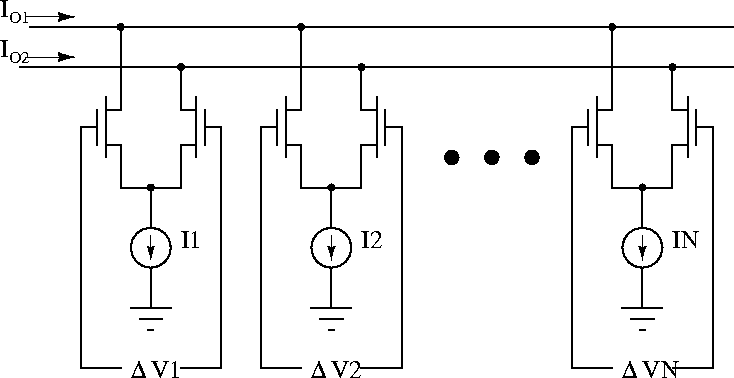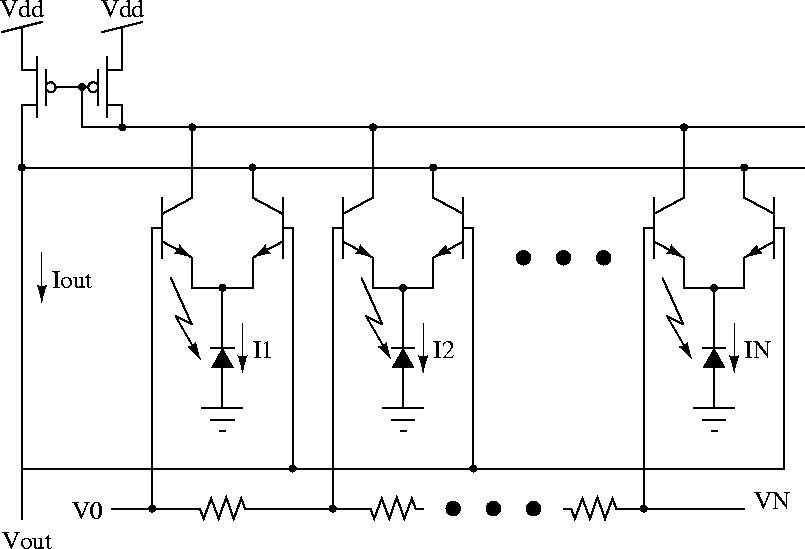
DeWeerth has implemented a centroid detection chip [Deweerth 92] based on an aggregation network shown in Figure 2.20. Using this circuit an output current of the form

is obtained. In order to use this circuit for spatial centroid
detection, a spatially-sweeping reference voltage is produced at one
input of the differential pairs. This is simply done by a resistive
voltage divider with its ends connected to reference voltages, ![]() and
and ![]() . The other input of the differential pairs are all connected
together and connected to the output of the circuit. Photocurrents
are presented as the biasing current of the differential pairs. In the
actual implementation described in [Deweerth 92] the input
transistors of the differential pairs are realized using bipolar
transistors to reduce the effects of device mismatch. Polysilicon
resistors have been used for the voltage divider.
. The other input of the differential pairs are all connected
together and connected to the output of the circuit. Photocurrents
are presented as the biasing current of the differential pairs. In the
actual implementation described in [Deweerth 92] the input
transistors of the differential pairs are realized using bipolar
transistors to reduce the effects of device mismatch. Polysilicon
resistors have been used for the voltage divider.
Obviously, the nonlinearity of the tanh function affects the
operation, if proper assumptions or constraints are not made. It is
reasonably assumed that the voltage difference across each resistor,
![]() , is very small. This can easily be satisfied by a choice
of reference voltages. An analysis for a simple case of constant
background illumination and constant-width-and-intensity object is
given in [Deweerth 92].
, is very small. This can easily be satisfied by a choice
of reference voltages. An analysis for a simple case of constant
background illumination and constant-width-and-intensity object is
given in [Deweerth 92].
The 160 ![]() 160 array of this centroid detection chip has been
realized in a 2
160 array of this centroid detection chip has been
realized in a 2 ![]() m BiCMOS process in an area of 6.8mm
m BiCMOS process in an area of 6.8mm ![]() 6.9mm.
6.9mm.

Figure 2.20: DeWeerth's spatial aggregation circuit.

Figure 2.21: DeWeerth's spatial centroid detection circuit.